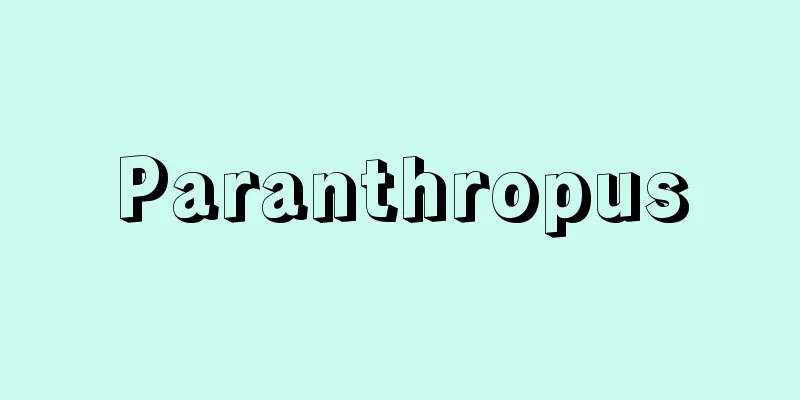Obese child - Himanji

|
A social term for simple childhood obesity, which refers to obesity caused by a complex interplay between genetic and environmental factors and lifestyle and emotional factors, and is distinguished from obesity caused by obvious underlying diseases. When one or both parents are obese, the constitution is often inherited, but there is a particularly strong correlation with the mother. However, during the food shortages during and after the war, the number of obese people dropped dramatically, and diabetes also disappeared, so even if one has a predisposition to obesity, it can be said that it is possible to prevent the onset of obesity by eating an appropriate diet. In addition, childhood obesity was thought not to cause health problems during childhood, but recently lifestyle-related diseases such as dyslipidemia, fatty liver, hypertension, and diabetes have appeared. On the other hand, the relationship between infantile obesity and adult obesity and resistance to treatment based on the dynamics of fat cells have become a problem. In recent years, attention has been focused on the possibility that a low-nutrition environment in the womb may affect postnatal susceptibility to obesity and metabolic syndrome. Women in their 20s and 30s have a strong tendency to be extremely diet-oriented and extremely thin. If a fetus exposed to low nutrition in the womb of such a mother catches up growth rapidly after birth due to a high-nutrition diet that is mismatched with the prenatal environment, it will be more likely to develop lifestyle-related diseases later. This suggests that healthy nutritional management of the mother is important. Research has shown that 70% of obese children progress to adult obesity, and that even if obesity is eliminated after becoming an adult, it increases the risk of death in adulthood, so childhood obesity needs to be treated. Obesity in infants and young children is assessed using the percentile values of the growth curves found in the Maternal and Child Health Handbook (weight above the 90th percentile) or the Kaup index, i.e., weight (g)/height (cm) 2 × 10 (20 or more). For older children of school age or older, a commonly used method is to calculate the degree of obesity from the average weight for sex and height and current actual weight, i.e., (difference between actual weight and average weight/average weight for height) × 100 (20% or more). Nutritional intake during infancy is determined unilaterally by caregivers, but eating behavior and food preferences are said to be imprinted between birth and around the age of three, so it is necessary to help children acquire good eating habits during this period. To prevent obesity in infants, (1) if there is a family history of obesity, make sure to provide proper nutrition from early infancy, neither too much nor too little, (2) try to breastfeed as much as possible, (3) if formula-fed, avoid forcing the baby to drink too much, (4) keep in mind that a child's body shape will transition from the obese type of infancy to the normal range, and (5) get into the habit of eating meals together as a family, enjoying the meal slowly and chewing well (eating quickly can lead to overeating as the child does not feel full). Treatment for obesity in school-age children involves (1) receiving dietary and menu guidance from a doctor or nutritionist. Even if a meal contains the same amount of energy, if the amount of fat is doubled, the amount of body fat stored after a meal will increase by nearly 10 times. (2) ensuring that the child is determined to lose weight and not forcing them to diet too frequently. (3) skipping breakfast leads to more frequent snacking and late-night meals, which shifts meal times and causes obesity by eating at night when the energy consumption system is low. Therefore, skipping breakfast, eating late-night meals, and irregular snacking should be avoided. (4) A nocturnal lifestyle with less sleep time tends to make children more susceptible to obesity. Children who are physically active tend to sleep longer. Children should be encouraged to clean their rooms and tidy their beds. (5) Eating alone can lead to obesity-related dietary habits and eating too quickly. Eat with family members as much as possible. (6) Do not ask for second helpings of school lunch. Also, limit soft drinks as much as possible. (7) According to a follow-up study of 8,000 children conducted in the UK, watching television for more than 8 hours a day or sleeping less than 8 hours a day at age 3 was linked to the formation of obesity at age 7, so care should be taken to avoid long periods of television viewing or video games. (8) Effective treatment can be expected by observing the progress using a growth curve. Generally, if a child is moderately obese, and does not gain weight, they will grow taller and return to normal height within two or three years. [Yoshiro Inoue] “A. Must, P. F. Jacques, G. E. Dallal, C. J. Bajema, W. H. Dietz: Long-term morbidity and mortality of overweight adolescents. A follow-up of the Harvard Growth Study of 1922 to 1935 (“The NEW ENGLAND JOURNAL of MEDICINE”, 1992, Massachusetts Medical Society)” ▽ “J. J. Reilly, J. Armstrong, A. R. Dorosty, P. M. Emmett, A. Ness, I. Rogers, C. Steer, A. Sherriff: Early life risk factors for obesity in childhood: cohort study (“BMJ 2005; 330: 1357”, 2005, BMJ Publishing Group Ltd.)” ▽ “R. M. van Dam, W. C. Willett, J. E. Manson, F. B. Hu: The Relationship between Overweight in Adolescence and Premature Death in Women (“Annals of Internal Medicine”, 2006, the American College of Physicians)” [Reference] |Source: Shogakukan Encyclopedia Nipponica About Encyclopedia Nipponica Information | Legend |
|
小児単純性肥満症の社会的慣用語で、遺伝的・環境的因子と生活習慣や情緒的因子とが相互に複雑に絡み合って生ずる肥満をさし、明らかな基礎疾患から肥満するものと区別される。両親または片親が肥満の場合はその体質が受け継がれることが多いが、とくに母親との相関が強い。しかし、戦中戦後の食糧難時代には肥満者が激減し、糖尿病も影を潜めたことから、たとえ肥満の素質があっても適切な食事をとることによって肥満の発症を防ぐことが可能であるといえる。また、小児の肥満は小児期に健康障害をきたすものではないと思われていたが、最近では脂質異常症、脂肪肝、高血圧、糖尿病などの生活習慣病が出現している。一方、脂肪細胞の動態から乳幼児期の肥満と成人肥満との関連や治療に対する抵抗性などが問題視されている。 近年、胎内での低栄養環境が、生後の肥満感受性や、メタボリック症候群感受性に影響を与える可能性が注目されている。20歳代、30歳代の女性には極端なダイエット志向が強く、著しいやせ傾向にあり、そのような母親の子宮内で低栄養にさらされた胎児が、出生後に胎内環境とミスマッチ(不適合)した高栄養の食生活によって急速に成長を取り戻す(catch up growth)と、後に生活習慣病を発症しやすくなるという。このことは母体の健全な栄養管理が重要であることを示唆している。肥満児の7割が成人肥満に移行すると同時に、成人となってから肥満を解消しても成人期の死亡リスクを上昇させるという研究報告もあり、小児肥満は治療する必要がある。 乳幼児期の肥満の判定には、母子健康手帳にみられる成長曲線のパーセンタイル(百分位数)値(体重が90パーセンタイル以上)やカウプ指数、すなわち 体重(g)/身長(cm)2×10(20以上)が用いられ、また学童以上の年長児では、性別・身長別平均体重と現在の実測体重から肥満度、すなわち(実測体重と平均体重の差/身長に見合う平均体重)×100(20%以上)を算出する方法がよく用いられる。 乳幼児期の栄養摂取は、養育者によって一方的に行われているが、食行動や食品選択性は生後から3歳ころの間に刻印される(刷り込み)といわれており、この時期によい食習慣を身につけさせる必要がある。 乳幼児の肥満の予防は、(1)家族歴に肥満があれば乳児早期から多すぎたり少なすぎたりしない適正な栄養を心がける、(2)できるだけ母乳を飲ませるよう努力する、(3)人工栄養では強制による過飲を避ける、(4)幼児期の体型は乳児期の肥満型から正常域に移行するものであること、(5)食事はできるだけ家族そろって楽しくゆっくりよくかんで食べる習慣をつけること(早食いは満腹感がおこらないので大食の誘因となる)などに留意することである。 学童肥満の治療は、(1)医師や栄養士による食事や献立の指導を受ける。1回の食事が同じエネルギーであっても、そのなかに含まれる脂肪量が2倍だと食後の体脂肪の蓄積が10倍近く増える。(2)減量に対する本人の意志を確立させて、頻繁に節食を強制しないこと。(3)朝食を欠食すると間食や夜食の頻度が多くなり、食事時間がずれて、エネルギー消費系が低下している夜間に食事をとることが肥満を助長するので、朝食の欠食・夜食の摂取・不規則なおやつの摂取を避ける。(4)夜型生活で睡眠時間が短くなると肥満になりやすい傾向がある。体をよく動かす子供ほど睡眠時間が長い。自室の掃除やベッドの整頓(せいとん)など自分で行うようにする。(5)本人だけで食べる「孤食」は、肥満につながる食事内容や、早食いなどに結びつく可能性がある。なるべく家族といっしょに食べるようにする。(6)学校で給食のおかわりをしないこと。また、清涼飲料はできるだけ控える。(7)イギリスで行われた小児8000人の追跡調査によると、3歳でのテレビ視聴時間が1日8時間以上に及んだり、睡眠時間が1日8時間以内であると、7歳での肥満形成に結びついており、テレビの視聴やテレビゲームなどは長時間に及ばぬように留意する。(8)発育曲線を用いて経過を観察することで効果的な治療が期待できる。 一般に小児の肥満は中等度までのものであれば、体重を増加させなければ身長が伸びて、2、3年後には普通体に戻る。 [井上義朗] 『A. Must,P.F.Jacques,G.E.Dallal,C.J.Bajema, W.H.Dietz:Long-term morbidity and mortality of overweight adolescents.A follow-up of the Harvard Growth Study of 1922 to 1935(“The NEW ENGLAND JOURNAL of MEDICINE”, 1992,Massachusetts Medical Society)』▽『J.J.Reilly, J.Armstrong, A.R.Dorosty, P.M.Emmett, A.Ness, I.Rogers, C.Steer, A.Sherriff:Early life risk factors for obesity in childhood:cohort study(“BMJ 2005;330:1357”,2005,BMJ Publishing Group Ltd.)』▽『R.M.van Dam,W.C.Willett,J.E.Manson,F.B.Hu:The Relationship between Overweight in Adolescence and Premature Death in Women(“Annals of Internal Medicine”,2006,the American College of Physicians)』 [参照項目] |出典 小学館 日本大百科全書(ニッポニカ)日本大百科全書(ニッポニカ)について 情報 | 凡例 |
>>: Bell pepper - Piman (English spelling)
Recommend
Fish field - Gyoden
This refers to fish dengaku. Fish is marinated in...
Gift certificate - shohinken (English spelling) gift certificate
A type of bearer security that is prepaid and pay...
Antimony mineral - Antimony mineral
Antimony minerals include stibnite (Sb 2 S 3 ) , s...
Mithridates [VI] - Mithridates
King of Pontus in Asia Minor (reigned from about 1...
Vater-Pacini corpuscle
...It is also suitable for detecting coarse vibra...
Lake Nojiri - Nojiriko
This lake is located in Shinanomachi, Kamiminochi...
Enfant Cave - Enfant Cave
…Fossil human remains discovered at the Grimaldi ...
Tofieldia japonica (English spelling) Tofieldia japonica
…[Tetsuichi Yahara]. … *Some of the terminology t...
Oxidation and reduction
In the narrowest sense, oxidation refers to a subs...
ESP - Extrasensory Perception
Abbreviation for extrasensory perception. A term ...
Sound pressure waveform
...This is called the Aeolian tone. [Sound pressu...
Apparent solar day
...A general term for true solar days and mean so...
Brass instrument - Kinkan-gakki (English spelling) brass instrument English
A general term for wind instruments that produce ...
Ukon Genzaemon
Year of death: Unknown (Year of death unknown) Yea...
One Night Castle
Hakone Ishigakiyama Castle (Hayakawa, Odawara City...




![Saji [village] - Saji](/upload/images/67cbaacb6ba87.webp)




